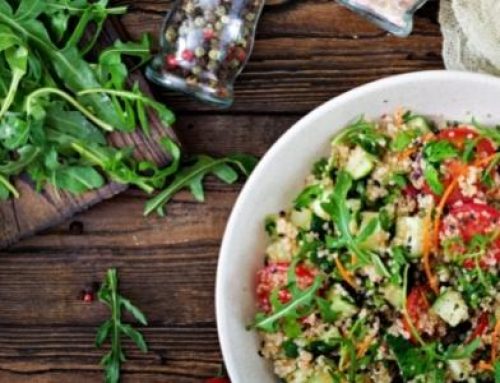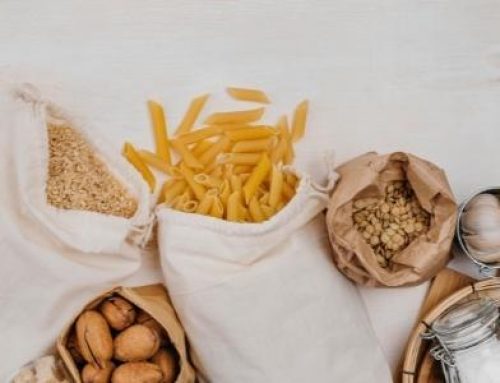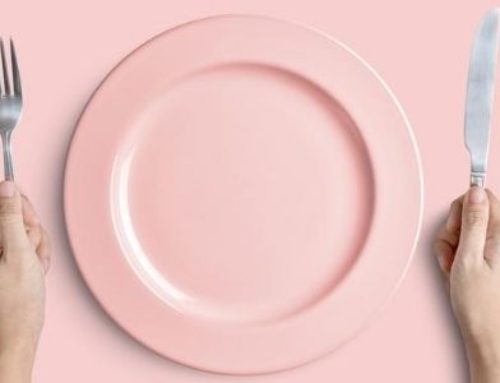When we consider healthy eating, we might think of a kitchen bench laden with fruits and vegetables, kale smoothies, perhaps the traditional 5 food groups. It’s unlikely that food storage is one of the first things that comes to mind.
Food storage, planning and leftovers are like quiet achievers of healthy eating.
Nutritious foods are certainly important and should take the main stage, but don’t forget about food storage – using it well can save you loads of time and money, plus help to boost your nutrition!
Read on to find out how + learn practical tips for food storage.
Save money
A staggering one third of the content of bins in kerbside waste collection is food organics (1). This food waste includes both unavoidable waste (inedible parts of food like eggshells) and avoidable waste (food that was edible at some time).
The aim is to reduce the avoidable waste with food storage and planning.
Through these strategies, you can avoid spending money on food that you never end up eating and reduce the amount of food going to landfill.
Here are some tips to get you started:
- Shop your kitchen: check what food you have in the fridge and pantry before going shopping and plan to use these foods up pronto!
- Clever meal planning: plan meals and factor in ingredient repetition and use of leftovers
- Integrate your shopping list: write a list based on your meal plan, and use your list when you go grocery shopping
Save time
By planning and storing food appropriately, you can save time through using leftovers for work or no-fuss dinners. Time-saving leftovers could be either meals or individual containers of cooked veggies, grains or meat that can be thrown together to make a complete meal.
Our dietitian-created meal plans take the guesswork out of planning & shopping lists and how to use leftovers to your advantage. For exclusive access to our meal plans, visit the Healthy Eating Hub.
Boost nutrition
There are many nutritional benefits to good food storage!
- Preserve the nutritional quality of food by keeping it fresh for longer.
- Avoid nutrient dense foods like fruit and veg going off – instead, you’ll be able to use them to nourish your body!
- By knowing how to store foods like meat and veg safely, you can be confident to buy and cook with them.
- You can use healthy leftovers instead of buying food at work (where there may be limited nutrient-dense options available).
Storage tips
Below are our tips for food storage and creative ways to avoid waste.
Fruit
Most fruit can be stored in the fruit bowl. Berries, melons or fruit that has been cut should be stored in the fridge.
Tips to avoid throwing away:
- Chop and store fruit in a container in the freezer for quick smoothies
- Use floury or soft apples in a pie or smoothie
- Use overripe bananas in our banana bread recipe or used peeled, frozen bananas to make a creamy smoothie
Vegetables
Most vegetables can be stored in the crisper of the fridge. Tomatoes can be stored on the bench.
Tips to extend storage life:
- Buy reusable storage bags to keep veg fresher for longer
Tips to avoid throwing away:
- Pickle veggies (such as carrots, cabbage, onion) to use in salads or sandwiches
- Use less perky veggies to make a flavoursome stock (such as our stock recipe)
- Regrow spring onions from stems
- Divide leftover fresh herbs into an ice cube tray, add a little olive oil and freeze
- Freeze leftover tomato paste in ice cube tray, then transfer cubes into a container in the freezer
Meat and fish
Keep raw meat or fish cold by storing on the bottom shelf of the fridge (sealed well to avoid leaking onto other items) for 1-3 days or by ‘Use by’ date. They can also be stored in the freezer for 3-6 months. If cooking for one, you might like to divide up the product and freeze in easy-to-use portions.
To thaw/defrost, place frozen meat or fish in the fridge. Avoid defrosting on the kitchen bench as this will provide the perfect temperature for bacteria to multiply quickly.
Most leftover meals can be stored in the fridge for about 3-4 days.
Tips to avoid throwing away:
- Stick to your meal plan to help use the fresh meat you’ve bought. If you realise that you won’t be able to use the meat, store it in the freezer and label the container.
- Use leftover cooked meat on a pizza, reheat and combine with a 4-bean mix for nachos, or reheat and add to a toasted sandwich
- Mash cooked fish into fish cakes, then crumb and pan fry.
Rice and pasta
Cooked rice or pasta can be stored in the fridge for 3-4 days (or 1 day for people with weakened immune systems). Cooked rice can be stored in the freezer for about 1 month.
Tips to avoid throwing away:
- Use cooked rice in fried rice, stuffed vegetables or rice pudding.
- Use cooked pasta to make a quick pasta bake or add to a frittata with veggies.
Bread
The shelf life of bread can vary from 2-5 days. Keep bread in the pantry or breadbox, or store fresh sliced bread in the freezer.
Tips to avoid throwing away:
- Use stale bread to make breadcrumbs (which can be used for rissoles/meatballs), croutons, quiche cases (instead of pastry), bread & butter pudding or French toast
General food storage tips
- Make sure that your fridge is set at less than 5°
- Label your containers in the fridge and freezer with the food and the date it was stored, so that you know what it is and how long it can be stored for.
- Follow the use by and best before advice:
- Use by: foods should not be eaten after this date as they may pose a health risk (2)
- Best before: foods may be eaten after this date, as they should be safe to consume but may have lost some quality (2)
- Read the directions for storage on packaged foods.
Do you feel equipped to store your food safely, but need help with your personal nutrition? Our Signature Program is all about helping you learn how to eat well LONG TERM and achieve your health goals without stress or restriction.
References:
- ACT Waste Feasibility Study – Roadmap and Recommendations – Discussion Paper [Internet]. Canberra: ACT Government; 2018 [cited 2022 Mar 7]. Available from: https://s3.ap-southeast-2.amazonaws.com/hdp.au.prod.app.act-yoursay.files/8615/2575/8129/WFS_roadmap.pdf
- Use by and best before dates [Internet]. Canberra: Food Standards Australia & New Zealand; 2019 Dec [cited 2022 Mar 7]. Available from: https://www.foodstandards.gov.au/consumer/labelling/dates/Pages/default.aspx






